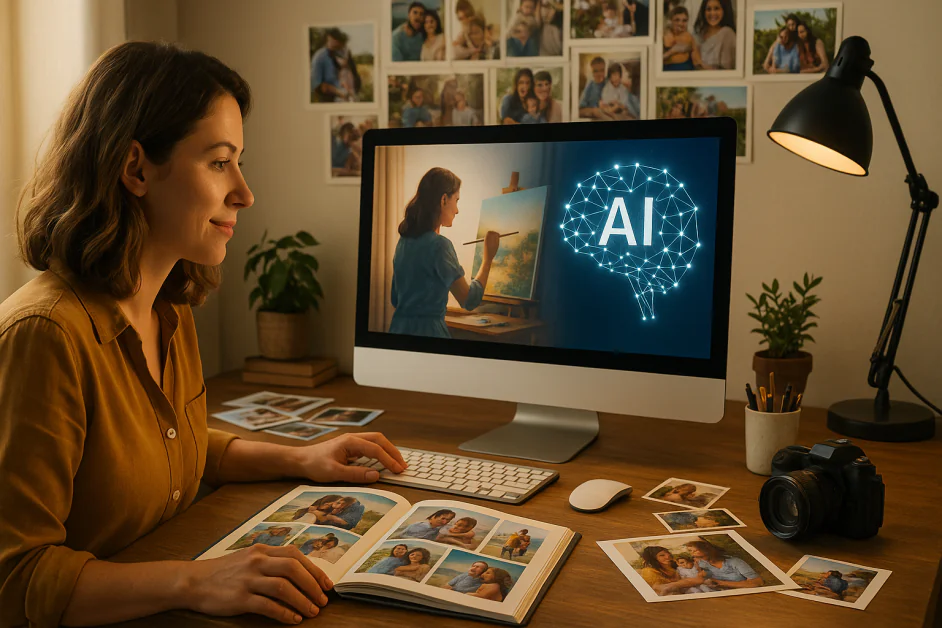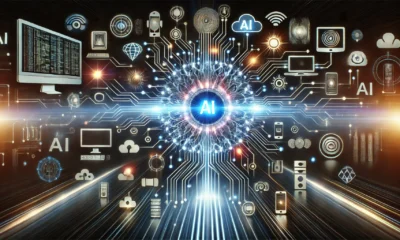Thought Leaders
The Creative Renaissance: How AI is Expanding Creative Access and Unlocking Personal Storytelling

The creative landscape is undergoing a significant transformation as artificial intelligence (AI) makes professional-quality creative tools accessible to broader audiences. This shift represents more than technological advancement, it reflects a fundamental change in who can participate in visual storytelling and creative expression.
For decades, professional design has required specialized training, expensive software, and technical expertise that created significant barriers for everyday users. Creative industries have traditionally served as gatekeepers, where access to quality or professional tools was once limited to those with formal training or significant resources. AI is leading this disruption by making creative platforms available to millions who previously lacked the technical skills to express their personal stories and artistic vision.
From Technical Barriers to Creative Expression
The traditional process of creating photo books, scrapbooks, and memory-sharing projects has presented challenges for those with meaningful stories to tell but limited design experience. Many parents want to create photo books commemorating important family milestones but feel overwhelmed by design software, complicated layout decisions and lengthy workflows. Grandparents often have decades of cherished photographs but struggle with the technical aspects of organizing, editing, and arranging photos for a creative project.
Additionally, most possess rich family histories and meaningful photo collections but lack the motivation to begin creating physical memorabilia. When faced with daunting photo software or blank design book templates, we often abandon our memory-sharing projects before getting started, leaving photographs stored, sometimes lost, in the digital world rather than transformed into lasting keepsakes that can be shared with family and friends.
New AI tools and experiences, when paired with your creativity, are incredibly empowering. Our data at Mixbook shows that projects using AI-powered Auto-Create features are completed at a significantly higher rate (57%) than those started from scratch. This proves that when technology removes technical barriers, people are able to focus on what truly matters: telling their story.
AI as Creative Enhancement Rather Than Replacement
Recently, many are questioning AI’s role in creativity. Will it replace human imagination? Remove originality? However, in most cases, AI functions as a supporting tool, handling technical tasks that amplifies human creativity rather than replacing it.
For instance, at Mixbook, AI tools help identify duplicate images for your photo book project. They can also suggest creative captions that reflect your tone or rearrange layouts to look more polished, without taking away your own creative, personal decisions. The AI handles the heavy technical lifting while humans retain complete ownership of the emotional, storytelling elements that make their stories uniquely theirs.
Public attitudes reflect this preference for collaborative AI. Seventy-one percent of people are open to AI categorizing and tagging their memories, but more than half say they want control over how the tags are applied. Similarly, 66% are comfortable with AI resurfacing meaningful memories, but most want some say in what gets shown and when. The message is clear: people want AI to assist, not presume.
Balancing Personalization with Authentic Expression
As AI becomes more advanced, a critical question arises: how do we maintain authenticity as personalization becomes increasingly automated?
It’s important to recognize that the fundamental principal AI should serve is being a creative amplifier rather than a creative director. When properly used, AI can certainly identify patterns and opportunities that creators may not initially recognize. This approach allows individuals to maintain ownership over their creative vision while benefiting from enhanced technology.
This balance is reflected in how people engage with AI today. Mixbook found that while 72% are comfortable with AI-powered memory enhancements, 85% say it’s essential that they retain the ability to edit, approve, and customize any suggestions. The desire is for support without sacrifice, technology that uplifts without overstepping.
At the end of the day, authenticity requires control over the narrative and emotional tone of your work. Allowing AI to suggest improvements, identify elements or streamline technical processes doesn’t mean it’s deciding the core creative decisions. What stories you tell, how you tell them and what emotions are shown will never be replaced by AI. It’s your voice that is the critical element in creative expression.
Generational Shifts: Embracing Creativity
One of the more surprising trends in creativity is embracing physical products and printed materials over digital mementos. Gen Z prints twice as many photos as the older generations, despite being raised on screens.
This phenomenon reflects a deeper need for connectivity in an increasingly digital landscape. Social media has taught Gen Z how to share visual stories but they’re discovering that these posts lack the emotional weight of tangible memories.
On the contrary, older generations are finding AI-powered creative tools surprisingly accessible, without even realizing they're using it. Many seniors and middle-aged users appreciate features like automatic photo organization, suggested layouts, and simplified design processes without being intimidated by the underlying technology. The AI operates transparently in the background, removing technical barriers while allowing these users to focus on their creative goals.
This seamless integration proves particularly valuable for older users who may have extensive photo collections but limited technical skills. AI can help them identify the most meaningful images from decades of memories, suggest compelling arrangements, and streamline the creation process without limiting or requiring them to learn complex software or design principles.
AI-powered creative tools are facilitating this cross-generational shift from digital consumption to tangible creation. Young creators can now transform their social media content into professionally designed photo books, while older users can efficiently organize and present their lifetime of memories in polished formats. Both groups benefit from AI assistance that enhances their creative capabilities without overwhelming them with technical complexity.
The Future of Accessible Creativity Lies in Responsible Design Platforms
At Mixbook, responsible AI starts with empathy. From a product development perspective, this means building tools that enhance creativity without overriding it. We believe people should always know what AI is doing and have control over the outcome, whether it’s suggesting layouts or organizing photos, AI works in service of your story, not at the expense of it.
Our approach is grounded in transparency and choice. We design tools that help people get started by selecting standout photos, refining captions or arranging layouts but users always have the final say. You can edit, override, or personalize every suggestion. Our data shows that when technical hurdles are removed, people finish projects faster but creative ownership remains entirely in human hands.
Looking ahead, AI will continue accelerating the evolution of design. But this progress comes with responsibility. Developers of creative AI tools must consider more than usability, they must also examine their cultural and emotional impact.
Are we amplifying diverse voices or unintentionally reinforcing aesthetic norms? Are we making storytelling more inclusive or replicating digital gatekeeping in new forms?
These are the questions that guide Mixbook’s product roadmap as we move forward.
Technology in Service of Human Connection
The current transformation in creative accessibility centers on human connection rather than technological advancement alone. AI serves as the tool that makes sophisticated storytelling accessible to anyone with a meaningful story to share.
In an era of information overload and fast-scrolling feeds, people are craving deeper ways to connect with their memories and each other. Nearly 85% of people say they regularly revisit their memories, whether by flipping through physical albums, scrolling through digital galleries, or sharing stories in text threads. Their reasons are telling: 79% do it to relive happy moments, 65% to share stories with loved ones, and 43% to clean up and better organize their digital lives.
As AI becomes a part of how people surface, enhance, and share memories, it must do so in service of that process. In fact, 66% are open to AI helping them resurface memories, especially milestones and sentimental snapshots but the overwhelming preference is for AI to remain suggestive.
These tools are becoming accessible. The stories are ready to be told. The direction of this creative evolution remains ours to determine.










